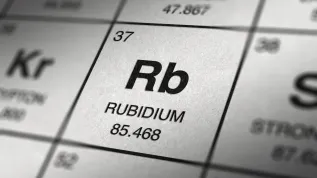
Nanopowders and other dual-use technologies that can serve both civilian and military purposes, including materials that “remember” radiation and temperature and antibacterial coatings, are being developed by scientists at the Institute of Physics of the Polish Academy of Sciences.
According to Deputy Director for Research Bartłomiej Witkowski, the unit “has enormous potential for the defence industry, based, among other things, on experience collaborating in consortia on defence projects.”
“We have technologies at a high level of technological readiness and many dual-use solutions. These are examples of interdisciplinary research, combining physics with such areas as materials engineering, chemistry, biology, and electronics,” Witkowski told the Polish Press Agency (PAP).
Nanopowders are among the technologies with the greatest potential for rapid implementation.
“We have ready-to-use solutions. Nanopowders for radiation monitoring ‘remember’ absorbed ionising radiation, allowing for a simple assessment of its dose and energy. In the defence field, such an insert containing nanopowders could be added to soldiers' uniforms, allowing to determine the radiation dose the soldiers have received and whether they require treatment,” Witkowski said.
He added that other nanopowders can ‘remember’ temperature. “They are used to produce coatings that change their luminosity depending on the temperature they are exposed to. In the defence field, they can be used, for example, to coat rockets or aircrafts to determine the stresses they were exposed to and for how long,” Witkowski said.
Antibacterial nanopowders can be combined with paints and varnishes for large surfaces. “Here, a potential military application could be painting the surfaces of mobile operating rooms to achieve a permanent antibacterial effect. Nanopowders produced using the same technology could be used, for example, in public transport, and as markers for medical diagnostics or supplementation,” he continued.
“Furthermore, one of our key areas is optics, more specifically optical detection. We are talking about ultraviolet and infrared detectors, among other things, which can be used in medicine, automation, industry, and in guidance systems, such as missiles. These detector structures, manufactured using ultrapure materials, for example, can be used in infrared and gamma radiation detection, creating new opportunities for the development of object detection technologies. In this area, we have a wide range of research options: from basic research to technological work and ready-made structure proposals for a wide range of applications,” Witkowski said.
Another project with potential defence applications involves anti-corrosion and thermal insulation coatings. “A few years ago, we developed thermal insulation coatings for windows that effectively block heat from the outside in the summer and prevent heat loss from the inside in the winter. However, this technology can be applied, for example, to rapid-fire barrels, where the problem of thermal overload is crucial. Combining thermal insulation coatings with barrier properties should lead to increased durability of barrels and rotor blades. These solutions could, in principle, be ready for use within a few months,” Witkowski told PAP.
The institute also offers research support in quantum cryptography. “We have groups working on the theoretical aspects of optimising quantum encryption, with potential applications in the military and banking systems. Our support can also extend to optimising navigation systems based on magnetic quantum sensors. We often hear that the GPS signal is distorted, which leads to significant navigation problems. However, in such a situation, a magnetic field can be additionally used. This requires highly sensitive sensors and advanced signal purification procedures. However, we have groups of outstanding scientists who specialize in analysing and de-noising such signals,” he said.
When asked about costs, Witkowski said they vary by technology. “For example, the production of nanopowders is relatively cheap; the process does not require large expenditures. The aforementioned paints with antibacterial nanopowders can be obtained at a low cost, and they are also environmentally friendly technologies. However, the production of some selective optical detectors requires expensive technology,” he said.
He added that the potential of Polish science is “under-utilised in our country.” “I have the impression that Poles do not fully believe that Polish science has anything to offer - and it certainly does. That is why it is so important for society, and above all, for decision-makers, to be aware of our outstanding achievements, so that our potential is fully utilised in Poland's development plans,” Professor Witkowski said.
The Institute of Physics of the Polish Academy of Sciences is one of 10 research institutes reviewed by the Polish Academy of Sciences for their potential participation in defence programmes.
Agnieszka Kliks-Pudlik (PAP)
PAP - Science in Poland
akp/ bar/ ktl/
tr. RL













